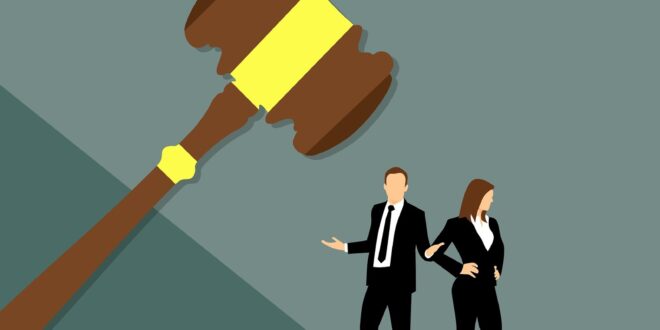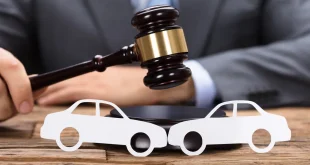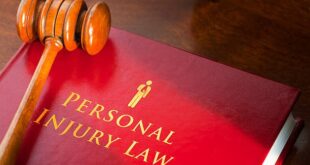Personal injury cases usually go one of two different routes: settlement or litigation. The first option occurs when the injured party and the defendant make an agreement for the defendant to pay a specific amount of money. Most lawyers aim for this result quickly and efficiently and ensure that the injured party gets some compensation. Defendants like this option because it cuts down on how much they pay.
However, litigation may occur when settlement ultimately fails. Why do people let these cases go into litigation when settlement is so beneficial to both parties? These reasons vary between cases and can be pretty complex and challenging to understand fully. Let’s take a deep look at the nature of a personal injury lawsuit, settlement, litigation, and why settlements fail, and litigation begins.
What Constitutes a Personal Injury Lawsuit?
Personal injury lawsuits occur whenever an individual (the plaintiff) is injured by another party (the defendant). They include situations like car accidents, motorcycle crashes, slip and fall cases, medical malpractice, wrongful death, assault, product failure, and much more.
These cases occur in tort court, meaning they exist as a case between two different private parties. Criminal cases take place in criminal court, with the plaintiff being city, state, or federal governments. Personal injuries like assault may be tried in both courts without violating the Double Jeopardy concept.
Each of these categories may be pretty diverse. For instance, malpractice often includes things like misdiagnosis, delayed diagnosis, birth injuries, medication mistakes, failure to treat, and surgical errors. This diverse array of different injury types make these cases quite complex to pursue.
An Explanation of Settlement vs. Litigation
In the early stages of a personal injury lawsuit, both parties meet with their lawyers to try to find a settlement. A settlement is a payment made by the defendant to the plaintiff. Settling skips litigation and provides a legally binding agreement that speeds up the proceedings.
In such situations, evidence need not be presented, and the case is never pursued in the court with litigation. This process takes cases that don’t reach settlements and pursues them to their legal end. Both parties must provide evidence showing their side, including testimony, photos, and more.
During litigation, the winning side must show a preponderance of the evidence (i.e., more than the other side) that proves their point. Thus, the plaintiff need not worry about “reasonable doubt” concepts when pursuing a personal injury lawsuit. Instead, they need to collect more evidence to show that the defendant hurt them and deserve the proper compensation.
A vast majority of personal injury cases never get to this phase. Various sources report that 83-96% of all lawsuits are settled before trial, minimizing the need for litigation. However, those that do go to trial often require lengthy and challenging work with a high-quality lawyer. They should always try to find experienced and reputed professionals like William McFarlane law. So why would anybody want to push a personal injury suit into a trial? Let’s find out.
Reasons Why Personal Injury Lawsuits Go into Litigation
While most personal injury lawsuits get settled before going into litigation, you must be prepared for this eventuality. There are many situations in which settling is just not an option for you or your case. Unfortunately, these scenarios are not uncommon and may develop into surprising concerns if you don’t take them seriously. Here are a few of the most common reasons your personal injury case goes to litigation.
Inability to Settle
Often, settling is in the best interest of both parties in a personal injury lawsuit. For instance, plaintiffs may just want to get quick money and finish the case. Meanwhile, the defendant wants to get out of court and avoid paying a high fee if the case is pretty clear-cut. Unfortunately, however, many personal injury cases result in litigation when settlement is not correctly handled. Often, this occurs in lawsuits against the federal government.
Why would the plaintiff refuse to settle with the defendant? There are many reasons why they may decide to go into litigation instead of taking the quick cash. Often, their lawyer suggests this option, and their client goes along with it. Just a few reasons why they might go into litigation include:
- An air-tight case that they’re likely to win easily
- A desire to get more money out of the defendants
- Anger at the defendant for the incident
Likewise, the defendant may refuse to settle if they feel confident of their lawyers and their case. For example, government officials may refuse to settle a case and demand litigation because they can afford better legal help than the plaintiff. This situation may be quite frustrating for the suing party but can be overcome with high-quality legal assistance.
Dispute Over Payments
In other situations, some plaintiffs may find themselves willing to settle but unhappy with the payment plan suggested. For example, the defendant may demand a tiered payment due to financial struggles. The plaintiff may think this is an attempt to get out of paying and require litigation instead.
Or the defendant may deny a plaintiff’s suggestion, such as raising the payment amount to a level they don’t want to pay. This type of back and forth can go on for ages and cause alienation between each party. As a result, litigation may be the only possible recourse for this frustrating situation.
Failure to Pay a Settlement
When a personal injury case is successfully settled, the defendant must pay the plaintiff the agreed-upon value. However, some may decide not to pay this money and cause complications with the case. In this situation, criminal proceedings may be necessary. That said, the personal injury case may then go into litigation in an attempt to get the money owed to them by the defendant.
Most defendants work hard to avoid this situation because default on these payments ultimately results in even higher penalties than if the case had initially gone into litigation. Unfortunately, some may find it hard to make payments due to financial difficulties, health problems, or other issues. The court does take these factors into account but does not use them as an excuse for a failure to pay.
New Mitigating Evidence
Occasionally, new evidence might pop up during the settlement phase that causes it to cease abruptly. For example, either side may introduce new evidence when trying to hash out an agreement. This information could then push the case in a different direction, causing the plaintiff or defendant to move for litigation. If the case goes to litigation, this evidence may then be submitted to help proceed.
This new evidence must be supplied during the case or in an appeal if one occurs. New types of evidence include testimony from people who witnessed the injury, photos of the incident itself, doctor statements that may shed new light on the extent of the injuries, and any other information that takes the case in a new direction. Often, this information may cause settlement failure if the plaintiff or defendant uses it to make a legal decision.
Catastrophic Injuries Occur
Many personal injury cases center around minor injuries that a doctor or medical professional can easily handle. However, many catastrophic injuries could occur that change the atmosphere of a personal injury case. As a result, litigation is often necessary to help those with injuries like:
- Heavy head injuries that may slow their cognitive or processing skills as a person
- Spinal injuries that make it impossible for them to work again or limits their abilities
- Damage to the back that causes persistent and chronic pain that won’t go away
- Amputation of various limbs during a car accident or similar type of situation
- Other types of paralyzing or crippling injuries that limit a person’s capability
When these injuries occur, settling is often not enough. Litigation may be necessary to get the kind of compensation needed to help a person recover. This situation often depends on the affected party, their medical treatment, and other aspects that may affect their health.
The Affected Party Passes Away
Personal injuries don’t always end well for the injured party. Sometimes, lingering health issues caused by the accident may result in that person’s death. This situation often complicates any attempts at settlement. For example, if that individual was interested in settling but passed away before it was finished, their family members take over the case. As a result, they may decide on a different course of action.
Many family members, grieving their loved ones, may then choose to litigate rather than settle. This step is often commonly paired with a criminal trial to punish the defendant. Family members usually take these steps to ensure they get some justice. For instance, when an individual is found innocent in a criminal court, a wrongful death suit helps their family get compensated for the death.
While even the highest payment will not indeed cover the grief a family feels after a loved one has passed, a wrongful death lawsuit may be an essential step to take. In most states, the old personal injury lawsuit must be changed into a wrongful death suit or dropped to create a new case. The option here varies depending on the state’s laws and regulations regarding personal injuries.
Help is Available
Is your personal injury case threatening to go to litigation, and do you need legal help? This complex legal situation isn’t one to take lightly and may require special protection from lawyers you can trust. That’s why it’s wise to talk to the catastrophic injury attorneys at Strong Law to learn more about this situation. Doing so will help to make your case easier and avoid financial risks as well.
 HammBurg Be informed with latest news, reviews, entertainment, lifestyle tips, and much more.
HammBurg Be informed with latest news, reviews, entertainment, lifestyle tips, and much more.




